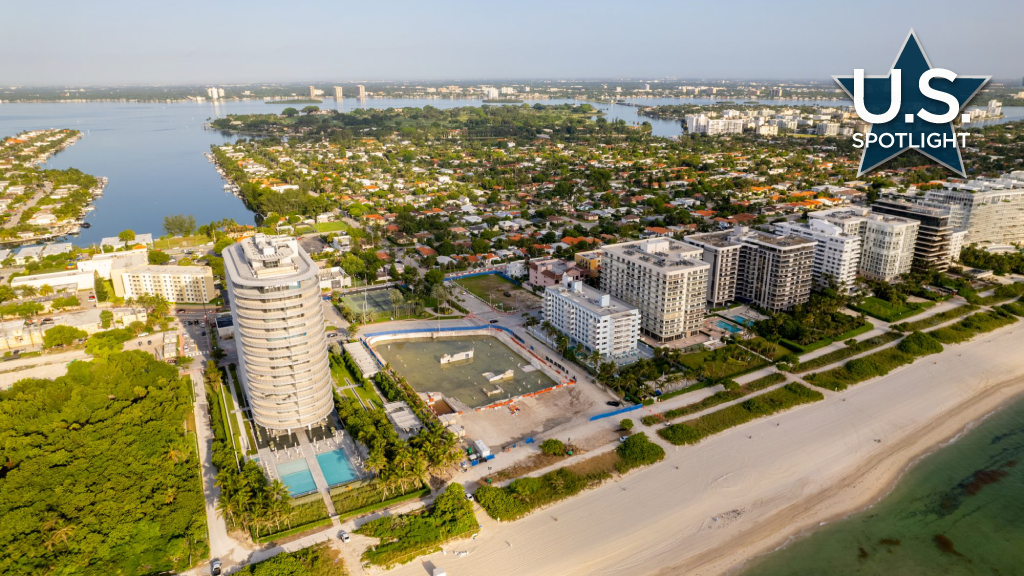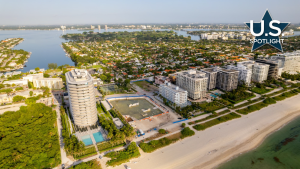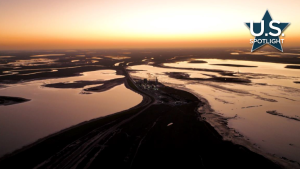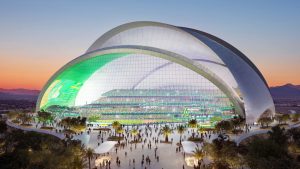Researchers have found numerous highrises along the coasts of Miami-area barrier islands slowly sank by up to three inches between 2016 and 2023 and the subsidence shows no signs of stopping.
Vibrations from nearby construction likely play a role, the researchers concluded, as the area sits on porous limestone with sandy layers interbedded within. Tremors from the work may cause the sand layers to become more densely packed under the sustained load of the structures.
Researchers looked at 87 highrises in Sunny Isles Beach, Bal Harbor and Surfside, as well as Miami Beach, 19 of which have been completed since 2014. The buildings included Champlain Towers
South in Surfside that collapsed in 2021. They found 35 coastal buildings were slowly sinking.
The analysis detected no displacement before the Surfside collapse, even during construction nearby, indicating settlement was likely not the cause. The collapse was attributed to the deterioration of concrete in the structure because of poor maintenance and design flaws.
However, the devastating collapse of the Champlain South tower highlighted the need for monitoring of building stability, especially in coastal areas with corrosive environmental conditions.
Researchers from the universities of Miami and Houston and a host of other institutions participated in the study.
The team used Interferometric Synthetic Aperture Radar (InSAR) from satellite sensors to examine subsidence of the structures. More than 320 SAR images were acquired over the years.
Researchers documented vertical displacements ranging from two to eight centimetres. The subsidence was most widespread in Sunny Isles Beach and Surfside. At most of the structures examined, the sinking slowed with time, suggesting it was due to construction activities.
The majority of the subsiding buildings are new structures built after 2014. This suggested to researchers that subsidence is a consequence of their own construction. Most of the older structures show sudden acceleration of subsidence, suggesting it is due to construction activities that took place in the vicinity and creep deformation of the sandy layers within the limestone.
“This study demonstrates that highrise construction on karstic barrier islands can induce creep deformation in sandy layers within the limestone succession persisting for a decade or longer,” say authors of the study, led by Farzaneh Aziz Zanjani, a postdoctoral researcher in the seismology group at Washington University in St. Louis. “It showcases the potential of InSAR technology for monitoring both building settlement and structural stability.”
According to the study, ongoing concerns persist about the potential impact of South Florida’s topography on the structural integrity of buildings. The region’s geology is generally characterized by young, highly porous limestone containing dissolution features like vugs, cavities and sinkholes.
The geology of the barrier islands is even more complex because the limestone may contain interbedded sand layers.
The study revealed subsidence is particularly widespread in northern and central Sunny Isles Beach where 67 per cent of the existing structures are subsiding. In Surfside, nine out of 27 coastal buildings show subsidence. In Sunny Isles South and Bal Harbor, only two out of 13 and one out of 18 structures are subsiding, respectively. In Miami Beach, there are 110 coastal structures, but only two show a very subtle, localized subsidence signal over seven years.
“The grains within the interbedded sand layers reconfigure to a denser packing in response to the sustained structural load and the dynamic loads from the vibrations (of construction),” the study authors state. “The accommodation of the cyclic vibratory shear strain by matrix of sand particles leads to the closure of holes by particle rearrangements and volume reduction of the sand.”
The process is known as dynamic settlement leading to the subsidence that is observed and measured at the surface. It is aggravated by the presence of a sustained load such as a building. Once the vibrations from construction have stopped, researchers say the particle rearrangement may still continue under the sustained load.
“We hypothesize that subsidence is primarily due to the gradual reconfiguration of the sand grains into a denser packing within sandy layers interbedded in the limestone,” the researchers say.
“We further hypothesize that this grain rearrangement is instigated by construction activities, through either vibrations or groundwater flow in response to pumping during the initial construction phase.”
A drawdown on the water table can also lead to particle rearrangement within the sandy layers and induce similar effects as vibrations. Meanwhile, the structural load of a new coastal highrise may lead to channeling of the tidal flow, locally enhancing the tidal flow’s ability to change the packing of the sand grains. Injection of stormwater into the subsurface, which is practiced at most highrises for flood management, can also be a factor in subsidence.
Based on their analysis, the researchers concluded there is no indication that subsidence will stop, particularly if it is driven by tidal flow or stormwater injection.












Recent Comments